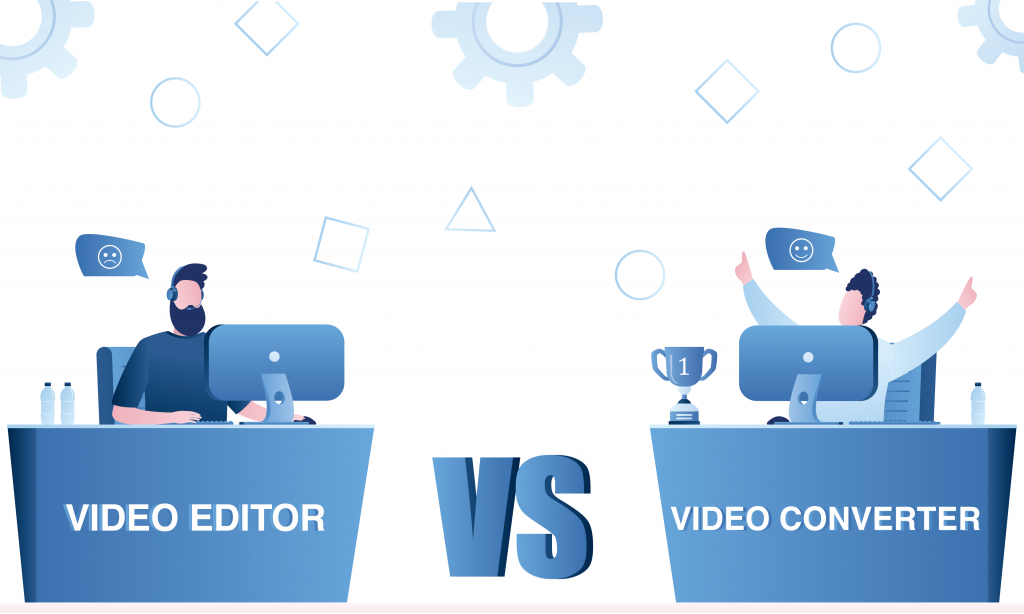
I often receive requests on which program to use to fulfill different tasks. Now I’d like to show you the difference between 2 programs – AVS Video Converter and AVS Video Editor.
Both AVS Video Editor and AVS Video Converter can be used to convert all key video file formats (including ready presets for different devices) and edit videos: delete the unnecessary parts from the video, add text and objects, apply audio and video effects, create DVD menus.
Unique AVS Video Editor featurs
1. Projects opportunity.
As AVS Video Editor has a lot of editing options, it is supposed to be used for a long time editing process. It is possible to save the project and next time start from the place where you left your editing. To save AVS Video Editor for the first time, press the “File” tab on the top toolbar of the program – choose “Save Project as …” and enter the name of your project. Then use the button “Save Project” to save changes to the existing project.
The project file represents a data file with a .vep extension containing the information on the video and audio clips, effects and transitions added to your movie. You cannot read the saved project with a third-party application, only AVS Video Editor is able to open (or reopen) the created project file. When you have created project, save it as a video file: press the Produce button on the middle toolbar.
2. SlideShow and transitions.
AVS Video Editor supports almost all key image formats. Thus the program can be used to create video with image files or slideshows. Applying transitions will help your video clips or images smoothly go into one another. There is a huge choice of transitions available in AVS Video Editor.
3. Screen capture.
This option allows you to capture any actions on the desktop to make your presentation or video tutorial more vivid and easily comprehensible. You can record all the operations you perform with the mouse and anything you see on your computer screen within the selected area and save your recordings in the FLV, WMV or AVI formats.
To use this feature launch the AVS Screen Capture application by clicking the Capture Screen button located on the left side menu of the Files and Effects Area or use the Capture Video from Screen option from the File section of the Top Menu.
4. Voice recording
If you plan to add some commentaries to your movie, you can record voice from a microphone connected to your personal computer audio card or record other sound from your PC. Select the Voice button in the middle toolbar. The Voice Record panel will become available to you.
Follow the link below to download AVS Video Editor and try all its features.

Unique AVS Video Converter features
1. Conversion options.
AVS Video Converter has a panel with input and output files properties, where you can set the processing mode, view advanced video file parameters, change output settings, correct aspect ratio and select necessary Flash Player options. Press the Advanced button after importing video and selecting the format
2. Subtitles
AVS Video Converter has the opportunity to convert your video containing subtitles. The available subtitles (if any) will be shown under the Subpicture option in Advanced settings.
It is also possible to change the output subtitles properties, such as font, size, style, align and color. You can do it by clicking on the Settings button on the top toolbar of AVS Video Converter – choose Subtitles.
3. Splitting video files and using Batch mode.
AVS Video Converter allows you to split a video file into several files and save them to new video files. It is possible to split video files by size or by chapters that you set at the desired position.
Batch mode allows you to convert a number of video files into separate files of selected format at once. You can load as many input files to the program as you need.
To use the Split option and Batch mode press the Advanced button after importing video files into the program, then check the option you need.
If you decide to split a video file by chapters, you will need to go to Edit tab from the main toolbar of AVS Video Converter, then press the Chapters button in the Edit Input File(s) window and set chapters.
4.Command line mode.
AVS Video Converter supports the command line mode, therefore allowing you to automate your video processing.
Converting your video files via the command line you can:
- process videos in the automatic mode,
- use your own presets for conversion,
- effectively work with multiple video files,
- schedule your conversion tasks,
- accelerate the conversion process.
These opportunities can be indispensable in case you regularly need to convert a lot of different files.
You can find detailed information on how to use command line mode from our User Guide.
Thus, if you specialize in editing videos, AVS Video Editor will offer you more opportunities, while AVS Video Converter is more convenient for simple conversion.
Tried AVS software? Do not hesitate to share your experience in the comments below.